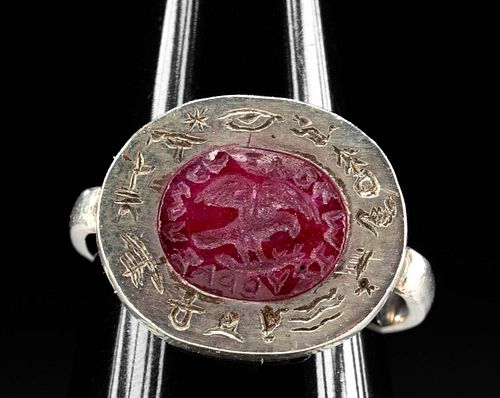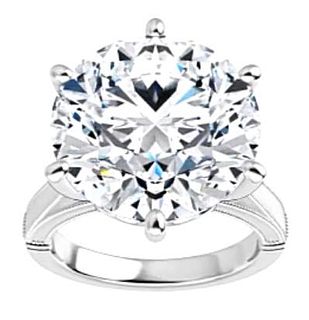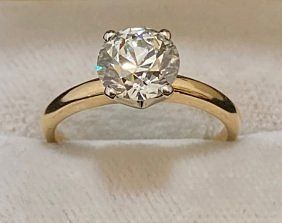White Gold Ring w/ Roman Ruby Intaglio of Eagle & Snake
Lot 32
About Seller
Artemis Fine Arts
686 S Taylor Ave, Ste 106
Louisville, CO 80027
United States
Selling antiquities, ancient and ethnographic art online since 1993, Artemis Gallery specializes in Classical Antiquities (Egyptian, Greek, Roman, Near Eastern), Asian, Pre-Columbian, African / Tribal / Oceanographic art. Our extensive inventory includes pottery, stone, metal, wood, glass and textil...Read more
Estimate:
$5,000 - $7,500
Absentee vs Live bid
Two ways to bid:
- Leave a max absentee bid and the platform will bid on your behalf up to your maximum bid during the live auction.
- Bid live during the auction and your bids will be submitted real-time to the auctioneer.
Bid Increments
| Price | Bid Increment |
|---|---|
| $0 | $25 |
| $300 | $50 |
| $1,000 | $100 |
| $2,000 | $250 |
| $5,000 | $500 |
| $10,000 | $1,000 |
| $20,000 | $2,500 |
| $50,000 | $5,000 |
| $100,000 | $10,000 |
| $200,000 | $20,000 |
About Auction
By Artemis Fine Arts
Dec 2, 2021
Set Reminder
2021-12-02 10:00:00
2021-12-02 10:00:00
America/New_York
Bidsquare
Bidsquare : Fine Antiquities | Asian | Ethnographic Art
https://www.bidsquare.com/auctions/artemis-gallery/fine-antiquities-asian-ethnographic-art-7918
Features classical antiquities, ancient and ethnographic art from cultures encompassing the globe. Egyptian, Greek, Roman, Etruscan, Near Eastern, Asian, Pre-Columbian, Native American, African / Tribal, Oceanic, Spanish Colonial, Russian, Fine / Visual Arts, so much more! Artemis Fine Arts info@artemisfinearts.com
Features classical antiquities, ancient and ethnographic art from cultures encompassing the globe. Egyptian, Greek, Roman, Etruscan, Near Eastern, Asian, Pre-Columbian, Native American, African / Tribal, Oceanic, Spanish Colonial, Russian, Fine / Visual Arts, so much more! Artemis Fine Arts info@artemisfinearts.com
- Lot Description
Roman, Imperial Period, ca. 1st to 3rd CE. A dazzling ruby intaglio of ovoid form skillfully hand-carved with the image of an eagle holding a snake and set in a modern white gold ring to be wearable. Boasting a brilliant hue of crimson, the impressive intaglio shows the noble bird in flight with both wings spread above him and his tail flared behind him as he grasps the sinuous body of his serpentine adversary with his sharp talons. His petite head bows slightly, perhaps to peck at his prey. This exciting scene is encircled by an inscription containing both Greek and Latin characters. A lovely band of incised symbols adorns the white gold setting of the intaglio, featuring minimalist images of waves, an eye, a flower, a quadruped, a bird, an ox head, an ankh, and others. Size (ring): 0.8" L x 0.6" W (2 cm x 1.5 cm); (intaglio): 0.4" L x 0.3" W (1 cm x 0.8 cm); gold quality: 89% (equivalent to 21K+); weight: 5.1 grams; US ring size: 6
Dramatic depictions of eagles battling serpents were commonplace throughout the Roman empire. These images of the most powerful of birds fighting the most dangerous of reptiles held an almost-cosmic, allegorical significance of the struggle between good - the eagles - and evil - the serpent. Here, as in most examples, good is seemingly victorious.
The eagle by itself was also a highly symbolic animal among the Roman military and was a great symbol of pride and victory in the eyes of the legions. Known as "aquila" in Latin, the eagle was a representation of honor, victory, and cohesiveness within a legion. One member of each legion was referred to as an aquilifer, or "eagle-bearer," as it was their primary duty to carry and protect that legion's designated eagle standard. If ever an aquila was lost or stolen, it was the primary obligation of the aquilifer to go to any lengths to recover the standard and see to its safe return. Losing an eagle standard was considered a grave omen for its respective legion and would typically lead to distrust and paranoia among the legionaries. To quote a piece of historical fiction set in Roman Britain entitled The Eagle of the Ninth (Rosemary Sutcliff, 1954), "Eagle lost, honor lost; honor lost, all lost."
This piece has been searched against the Art Loss Register database and has been cleared. The Art Loss Register maintains the world's largest database of stolen art, collectibles, and antiques.
Provenance: East Coast collection, New York Gallery, New York City, New York, USA, acquired before 2010
All items legal to buy/sell under U.S. Statute covering cultural patrimony Code 2600, CHAPTER 14, and are guaranteed to be as described or your money back.
A Certificate of Authenticity will accompany all winning bids.
PLEASE NOTE: Due to recent increases of shipments being seized by Australian & German customs (even for items with pre-UNESCO provenance), we will no longer ship most antiquities and ancient Chinese art to Australia & Germany. For categories of items that are acceptable to ship to Australia or Germany, please contact us directly or work with your local customs brokerage firm.
Display stands not described as included/custom in the item description are for photography purposes only and will not be included with the item upon shipping.
#159458Intaglio is ancient and set in modern white gold ring to be wearable. Interior of ring has 6 indentations. Some light abrasions and softening of detail to intaglio. Otherwise, intact and excellent.Condition
- Shipping Info
-
All shipping is handled in-house for your convenience. Your invoice from Artemis Gallery will include shipping calculation instructions. If in doubt, please inquire BEFORE bidding for estimated shipping costs for individual items.
-
- Buyer's Premium



 EUR
EUR CAD
CAD AUD
AUD GBP
GBP MXN
MXN HKD
HKD CNY
CNY MYR
MYR SEK
SEK SGD
SGD CHF
CHF THB
THB













